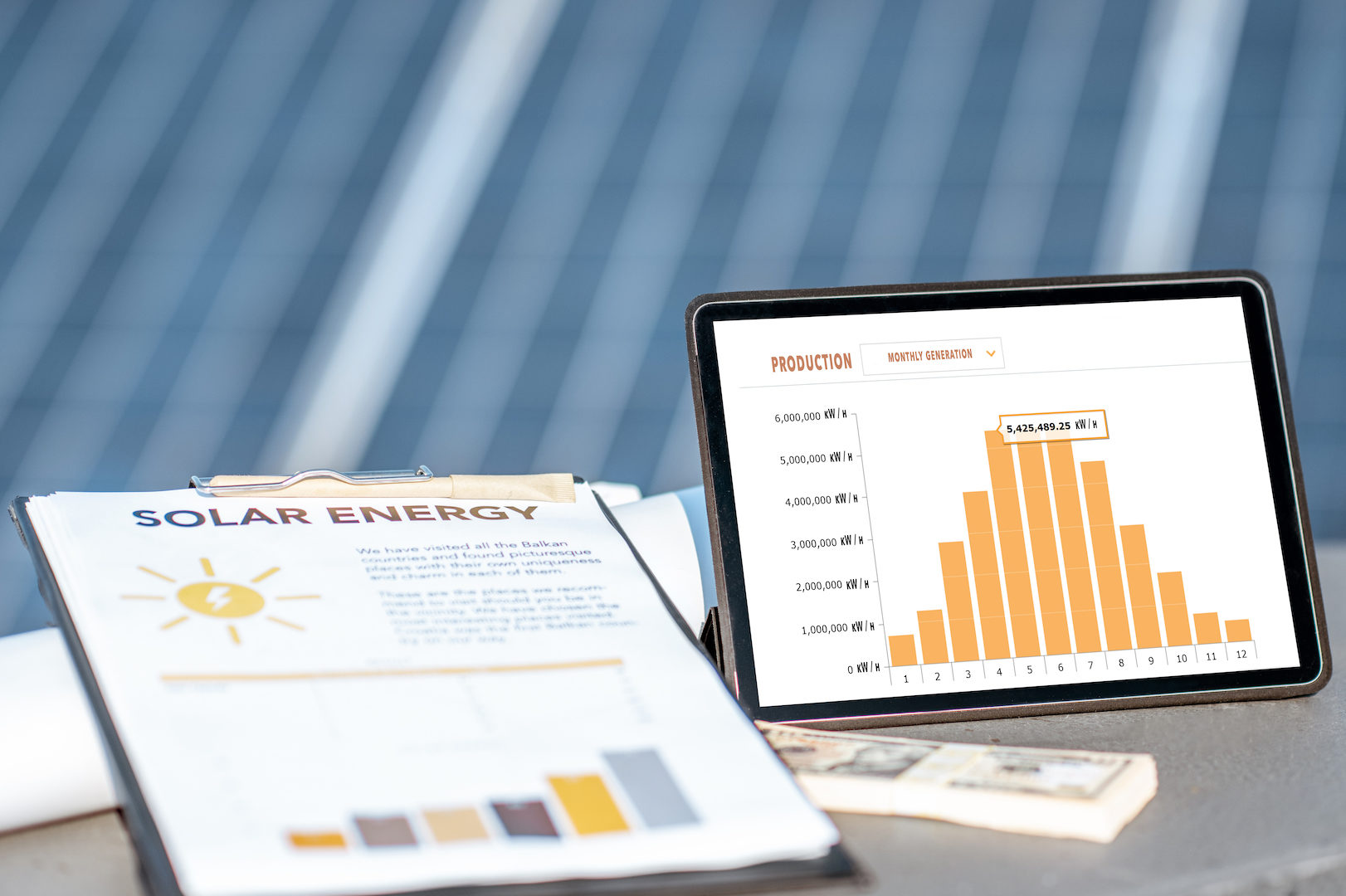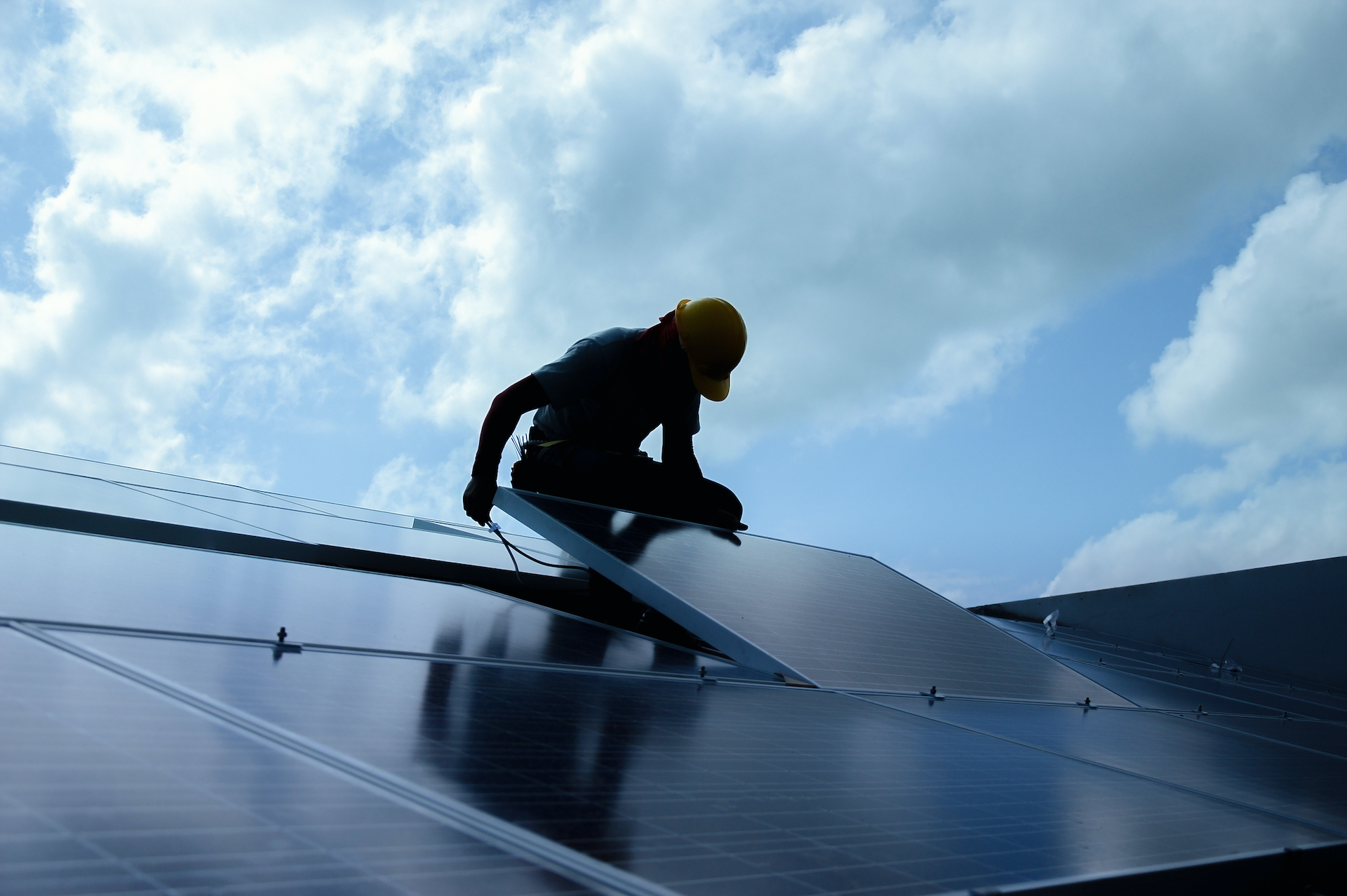How much do solar panels cost?
The National Renewable Energy Laboratory estimates that solar panel costs have decreased by 85 percent in the last decade. For most of recent history, solar panels were the largest cost in a home solar system. But consistent and steep declines in the price of solar panels over the last 20 years mean that today, they’re only about 15 percent of the total cost of an installed home solar system. The rest of the equipment (inverters, mounting systems, wiring, conduit, etc.) represent another 20 percent. When added to the 15 percent for solar panels, we’ve accounted for 35 percent of the cost…so where’s the other 65 percent?
The other 65 percent of the price to install a home solar system includes designing and permitting, installation labor, sales and marketing, and profit for the installation company. Unlike hardware (equipment) costs that continue to fall as new, more efficient technology and manufacturing processes are developed, these “soft” costs have decreased more slowly and, in the case of sales and marketing, have actually increased.

In 2020, the average cost of a home solar panel system in the US fell to $28,900, with an average system size of almost 10 kilowatts (10,000 watts). At 26 percent of the total project cost, the federal investment tax credit reduces the price by $7,514, resulting in a net cost of $21,386. State, local or utility programs may also provide incentives further reducing your final cost.
We’ll discuss rebates and incentives a little later, but what’s most important to understand now is that the cost of a home solar installation will vary, sometimes significantly, depending on several factors which are specific to your project. Though many of these factors are “real” in that they are directly related to actual costs, even comparable systems installed in the same area can be priced very differently.
The top nine factors which influence the cost of a home solar installation
How much do solar panels cost?
The National Renewable Energy Laboratory estimates that solar panel costs have decreased by 85 percent in the last decade. For most of recent history, solar panels were the largest cost in a home solar system. But consistent and steep declines in the price of solar panels over the last 20 years mean that today, they’re only about 15 percent of the total cost of an installed home solar system. The rest of the equipment (inverters, mounting systems, wiring, conduit, etc.) represent another 20 percent. When added to the 15 percent for solar panels, we’ve accounted for 35 percent of the cost…so where’s the other 65 percent?
The other 65 percent of the price to install a home solar system includes designing and permitting, installation labor, sales and marketing, and profit for the installation company. Unlike hardware (equipment) costs that continue to fall as new, more efficient technology and manufacturing processes are developed, these “soft” costs have decreased more slowly and, in the case of sales and marketing, have actually increased.

In 2020, the average cost of a home solar panel system in the US fell to $28,900, with an average system size of almost 10 kilowatts (10,000 watts). At 26 percent of the total project cost, the federal investment tax credit reduces the price by $7,514, resulting in a net cost of $21,386. State, local or utility programs may also provide incentives further reducing your final cost.
We’ll discuss rebates and incentives a little later, but what’s most important to understand now is that the cost of a home solar installation will vary, sometimes significantly, depending on several factors which are specific to your project. Though many of these factors are “real” in that they are directly related to actual costs, even comparable systems installed in the same area can be priced very differently.
The top nine factors which influence the cost of a home solar installation
Summary
The cost of having a home solar system installed has decreased consistently over the last 20 years and is expected to continue to decline. So, should you wait until solar prices get lower before making an investment in a home solar system? The short answer is no. In most cases, solar panel systems will save you money today, and waiting for lower prices will mean that you will miss out on months and years of savings.
So how can you make sure you’re getting the best home solar system for you at the right price today?
As we mentioned earlier, prices for home solar systems vary widely, even for comparable systems in the same areas. According to EnergySage, in the first half of 2020, home solar prices in New Jersey (the yellow area) ranged from below $2 per watt to $2.75 per watt. This might not seem like much, but on a 10,000 watt system, that’s a difference in price of almost $8,000!

Rapidly changing technology combined with the many variables that influence cost make it difficult for the average homeowner to assess whether they are getting the right home solar system for them and paying a reasonable price. Being aware of the factors which will influence the cost of your specific home solar project and getting multiple quotes from solar contractors is a good start. But there’s a better way…
Summary
The cost of having a home solar system installed has decreased consistently over the last 20 years and is expected to continue to decline. So, should you wait until solar prices get lower before making an investment in a home solar system? The short answer is no. In most cases, solar panel systems will save you money today, and waiting for lower prices will mean that you will miss out on months and years of savings.
So how can you make sure you’re getting the best home solar system for you at the right price today?
As we mentioned earlier, prices for home solar systems vary widely, even for comparable systems in the same areas. According to EnergySage, in the first half of 2020, home solar prices in New Jersey (the yellow area) ranged from below $2 per watt to $2.75 per watt. This might not seem like much, but on a 10,000 watt system, that’s a difference in price of almost $8,000!

Rapidly changing technology combined with the many variables that influence cost make it difficult for the average homeowner to assess whether they are getting the right home solar system for them and paying a reasonable price. Being aware of the factors which will influence the cost of your specific home solar project and getting multiple quotes from solar contractors is a good start. But there’s a better way…
Sentinel was founded to make sure homeowners get a home solar system, customized for them, at a fair price. Learn how we deliver better home solar here or get started with a free Solar Assessment.
Have questions on home solar costs or anything else? Send us a message and we’ll answer ASAP.
Sentinel was founded to make sure homeowners get a home solar system, customized for them, at a fair price. Learn how we deliver better home solar here or get started with a free Solar Assessment.
Have questions on home solar costs or anything else? Send us a message and we’ll answer ASAP.
Learn about solar
Find honest answers to some of the most commonly asked questions on home solar and clean energy.
















